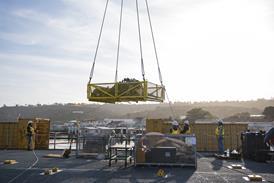Guy Norris/LOS ANGELES

Boeing is modifying a 30-year-old ex-United Airlines 737-200 for ground and flight tests of the rudder system as part of a US Federal Aviation Administration-led safety evaluation.
The 737 is being leased from Indiana-based Purdue University, which acquired the aircraft after United Airlines retired it in 1997. The flight tests, expected to begin early next month, were recommended by the US National Transportation Safety Board in the wake of two unexplained 737 crashes at Colorado Springs and Pittsburgh.
In both cases, anomalous uncommanded rudder "hard-over" inputs are believed to have played a part. Subsequent investigations, however, have so far failed to pin down the exact cause of the sudden rudder movements.
Unlike previous investigations, the flight tests will be undertaken by an independent team that "will take a fresh look at the entire system," says 737 programme rudder special project executive manager, Allen Bailey. Although a Boeing flight test team is taking part in the 737 ETEB (experimental test and evaluation board), the bulk of the effort will involve the FAA, NASA, Department of Defense, Air Transport Association and the Air Line Pilots Association.
Flights are expected to take place mostly in the Washington state area close to the Cascade Mountains which are "the perfect upset generators", says Bailey. It is to be decided whether the 737 will also fly in the turbulent wake of the FAA's Boeing 727-100.
As well as leasing and preparing the 737-200 testbed, Boeing is refurbishing a 737 vertical fin and rudder for use as a ground test rig. Bailey says: "We want to do this. There's nothing to hide. We are doing all we can to help this team to find out what the rest of the world hasn't been able to during the last 10 years."
The company is fitting the 737 with a comprehensive set of sensors to trace every movement of the flight controls, and particularly the rudder system. "We will know exactly where the wheel is, what position it is in, what force is being used, what the rudder pedal forces are, the strain on the cables, the exact condition of the primary and secondary valves on the PCU [power control unit, which drives the rudder]. We will know everything that is going on, and we will be able to measure that rudder response against known upsets," says Bailey.
The flight test element of the programme, expected to amass around 25h between December and next March, will evaluate rudder response throughout the envelope. "We will also test both PCUs - one with the old valve and one with the new valve," Bailey adds.
The 737 has a new digital air data computer and a 747 inertial navigation system for accurate reference data, as well as a wide array of flight test instrumentation and recording stations with real-time data display and analysis capability.
Source: Flight International























